COSMOS
Cosmos
Cav., Icon. 1: 9, plate 14. 1791; Kiger, Fl. North Amer. @ eFloras.org 21: 203; Fl. China @ eFloras.org 20-21: 856.
Annuals or perennial subshrubs. Stems usually one, erect or ascending, branched distally or +/- throughout. Leaves mostly cauline, opposite; petiolate or sessile; leaf blades usually 1-3 pinnately-lobed or undivided, ultimate margins usually entire, both surfaces usually glabrous, sometimes glabrate, hispid, puberulent or scabridulous. Capitula radiate, borne singly or in corymbiform arrays, radiate, hetrogamous; calycular bracts (5-)8, basally connate, +/- linear to subulate, herbaceous; involucres hemispheric or subhemispheric, 3-15 mm in diameter; phyllaries persistent, (5-)8, +/- 2-seriate, free, lanceolate, oblong-lanceolate, ovate-lanceolate, or oblong, +/- equal, membranous or herbaceous, margin +/- scarious; receptacle flat, paleate, paleae deciduous, linear, flat or slightly concave-convex, scarious. Ray florets (0-5)-8, neuter. Corolla white to pink or purple, or yellow to red-orange. Disc florets (10-20)-80+, bisexual, fertile. Corolla yellow or orange, tubes shorter than funnelform throats, lobes 5, +/- deltate. Staminal filaments hairy. Style branches linear, flattened, thicker distally, hirtellous, appendages relatively slender. Cypselae (Achenes) relatively slender, quadrangular-cylindric or quadrangular-fusiform, sometimes slightly arcuate, attenuate-beaked, wingless (or winged), faces glabrous or hispid to scabridulous or +/- setose, sometimes papillae, usually with one groove. Pappus of 2-4 (-8); retrosely barbed awns, persistent, sometimes absent.
35 species
Cosmos bipinnatus
Cosmos bipinnatus
Cav., Icon. 1: 10. 1791; Kiger, Fl. North Amer. @ eFloras.org 21: 204; Fl. China @ eFloras.org 20-21: 856.
Plants annual, erect, 30-200 cm tall, glabrous or sparsely puberulent, sometimes scaberulous. Leaves opposite; sessile or petiolate with petiole up to 1 cm long; leaf blade 6-11 cm, bipinnately lobed; ultimate lobes to 1.5 mm wide, margin entire, apex acute. Capitula terminal, solitary, radiate, heterogamous, 3-6 cm in diameter; peduncles 10-20 cm long. Calycular bracts 7-9, 6-13 mm long, spreading, linear to lanceolate, apices acuminate. Involucre 7-15 mm in diameter; phyllaries erect, lanceolate to ovate-lanceolate, 7-13 mm, apices rounded or obtuse. Ray florets usually 8, neuter. Corollas white, pink or purplish, limb obovate or oblanceolate, 15-50 mm, apices +/- truncate, 3 or more toothed. Disc florets 60+, bisexual, fertile. Corolla 5-7 mm long; tube shorter than funnelform throat, lobes 5, recurved, deltate. Cypselae 7-16 mm long, glabrous, papillose. Pappus absent or of 2 or 3 ascending to erect awns, 1-3 mm.
Common Names: Garden Cosmos, Mexican Aster


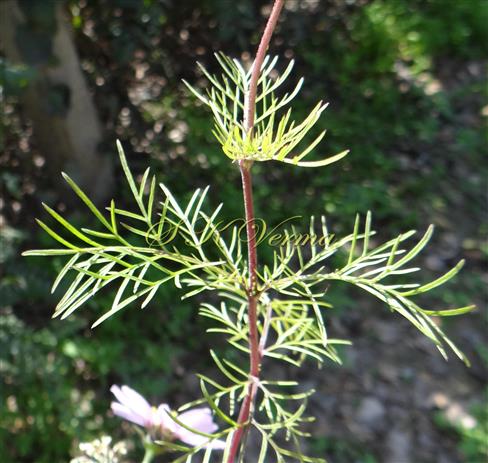
-See Calycular Bracts and Phyllaries-DSC02334.jpg)
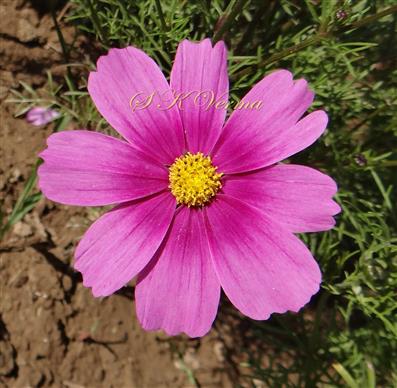
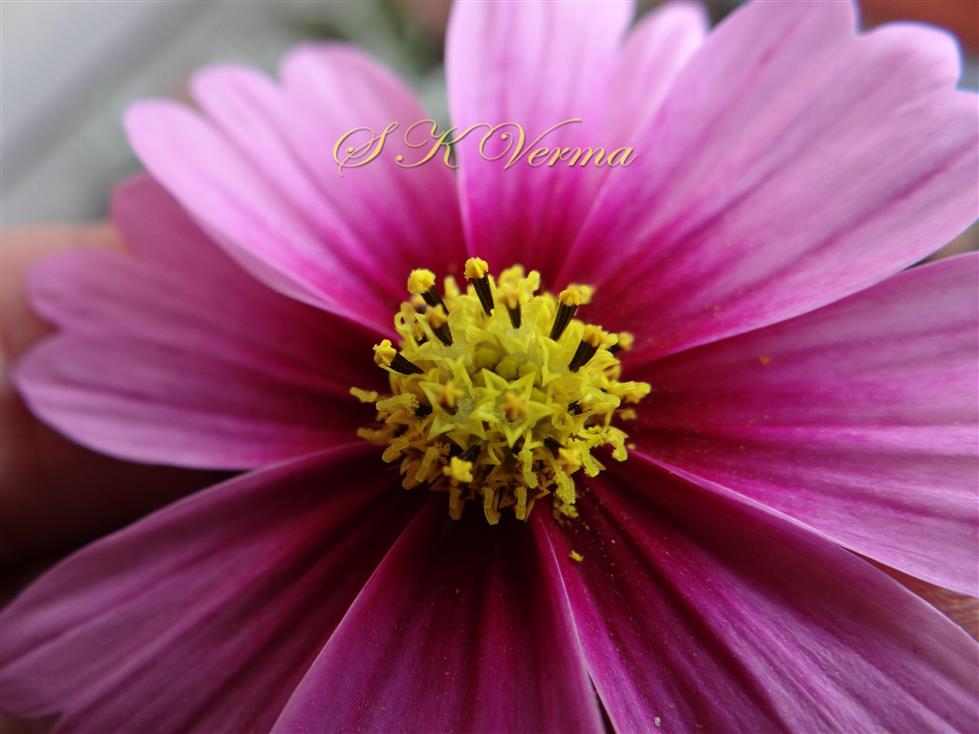

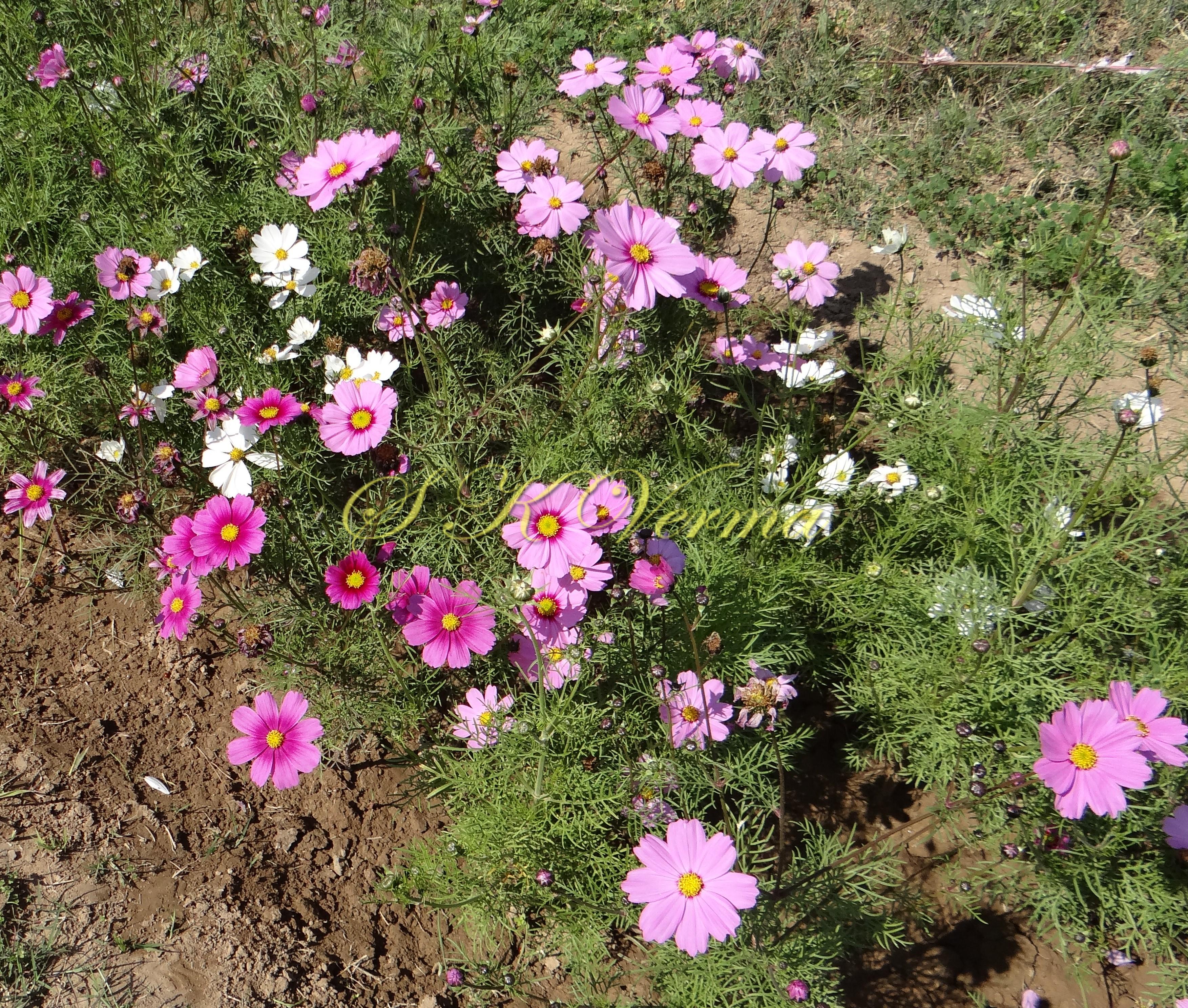
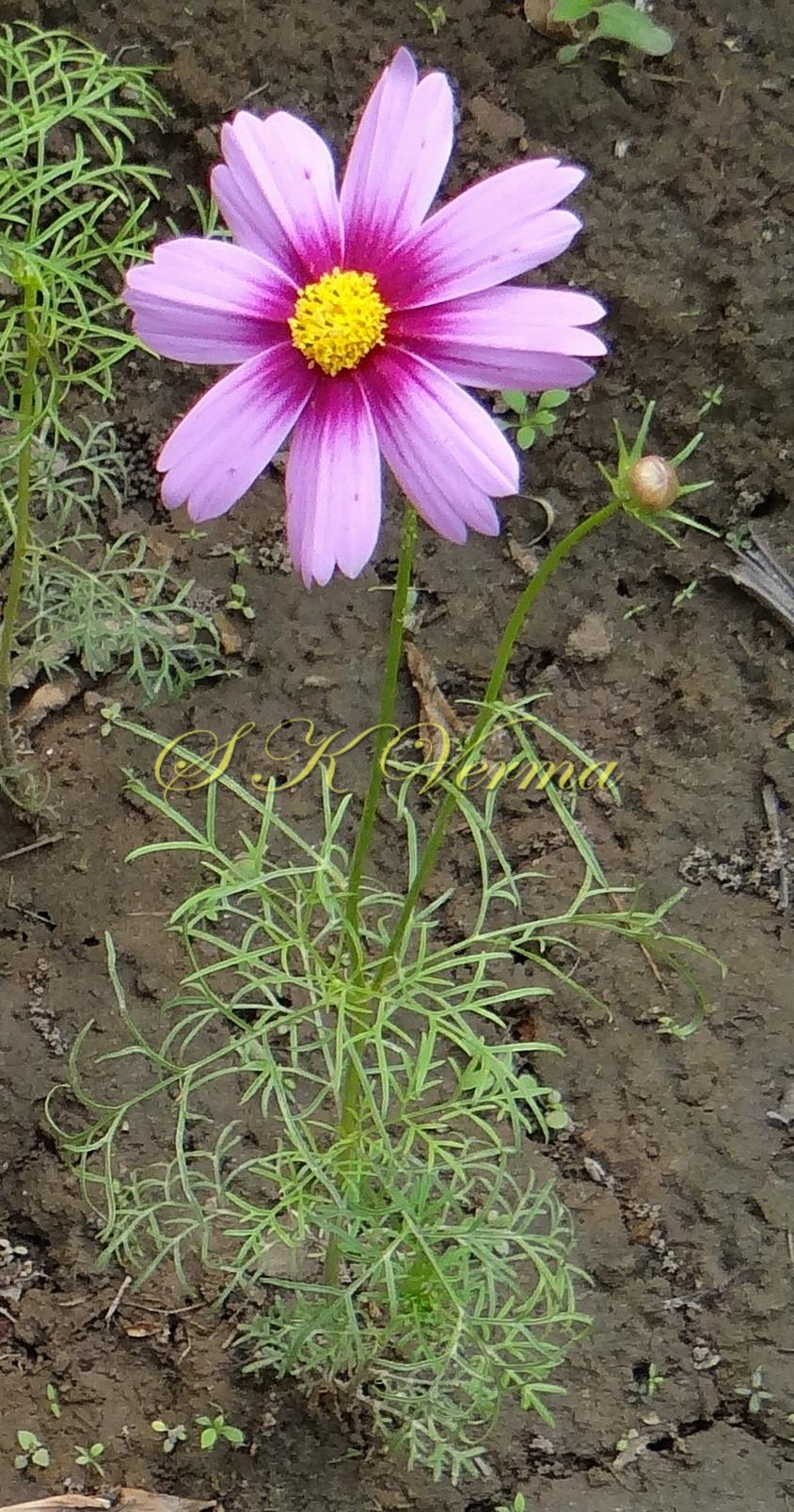

-See Calycular Bracts and Phyllaries-DSC02334.jpg)

